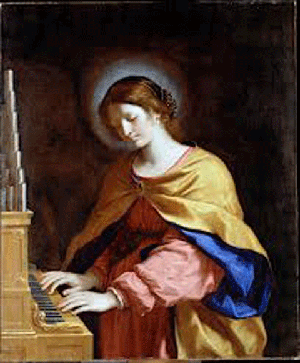
View in monitor screen size 1024/768 Click on "Column Heading" to sort. Find important information under Church Music/Information. For any specific help, please write to me at This e-mail address is being protected from spambots. You need JavaScript enabled to view it SACRED CATHOLIC MUSIC CAN BE HEARD ON YOU TUBE Direct MIDI to MP3 Converter is a simple audio utility that allows you to convert MIDI files to MP3, WAV, WMA and OGG formats. It can change the MIDI file into a audio format that you can burn on the Audio CD and play on a regular CD player. Read more Catholic Church music has been used from times immemorial, and continued by every Christian denominatin. Oriental religions, like Hinduism, use music for their rituals, as a slow chant, enhances the meaning of the sacred words. However, the oriental ethos, does not permit anyone to equate their religious music to the secular, used in the worldly pursuits. The Hebrews, too, being of oriental thinking, used monotone, for their incantations. This was continued in Islam, where the Muezzin sings his call for prayer in a plaintive chant. This tradition has seen a distortion in recent modern times, with Christian music adopting secular themes and rhythms, just to ' keep up with the times ' - with a concomitant loss of Faith. The early Church, having its origin in Judaism, followed the Hebrew customs. The "Dominus Vobiscum" - The Lord be with you * "Et cum spiritu tuo" - and with your Spirit - in the Latin rite, used the early "tones" (raagas). In the times of Charlemagne, the Gauls, used local chants, and from where our plain chant.(Gregorian Music) was promoted by Pope Gregory and formalized it,
In 1200 AD, Guido d"Arezzo, a monk, hit upon the idea of using, phonetic names for the scale, which was so far using the Greek Alphabet. He chose the hymn "Sancte Joannes" - the first syllables of each line were, ut, re, mi, fa, sol, la, and the last were Sancte Joannes. He formed one name from these two, and made "SI" - because Joannes, was spelled Ioannes. Later "ut" was dropped, and the Lord's name - Dominus was substituted, so we got our do re mi fa sol la si - When the instrumentation was used, as the keys producing the notes were static, they were given the name ABCDEFG - and dor re mi, was solely used for vocal music, which used the pitch according to the individual's ability, but the relationship between the notes always remained the same, thus one set for the human voice. |
|
Latest Recipes
Popular
OFFSEASON GOA
WOWMOM
Artwork For SALE
Latest Music
Mangalorean Recipes Facebook Page
Who's Online
Google Ad 3 CLICK
News
- Panaji: Arrival of German Chancellor in Goa #Gallery - Social News XYZ
- German warship makes a scheduled port call at Goa’s Mormugao Port - MSN
- Major fire engulfs cardboard factory at Cacora - The Times of India
- "Great pleasure": Captain Helge Risch as German warship makes a scheduled port call at Goa...
- Sancaole: German Chancellor Olaf Scholz during his visit to BITS Pilani K K Birla Goa...



 Catholic Church Music
Catholic Church Music








